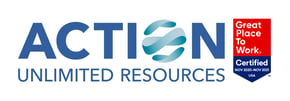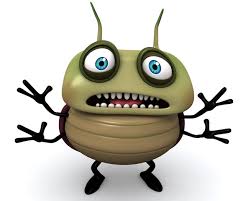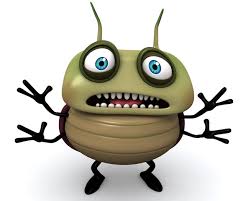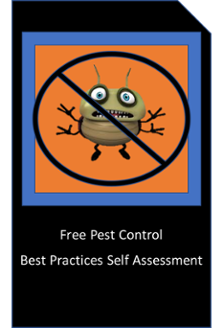Spring is in the air… And pests are either in your building now or they’ll be joining you soon. If you are responsible for facility maintenance, grounds, housekeeping, or other areas within a commercial facility with lots of people and lots of space then you may already be familiar with pest problems. When insects make their way into your facility, the occupants, visitors, staff, and management may all jump to the conclusion that the building is not properly cleaned or the janitorial supplies don’t work.
As you are aware, this is not always the case. Pest problems can occur even when facilities are well maintained. Termites, ants, mosquitoes, spiders, rodents, and other pests are active, hungry, and looking for a warm dry place to inhabit. Fortunately for you, proper pest control planning will minimize concerns within your facility.
As defined by Wikipedia, Pest Control refers to the regulation or management of a species defined as a Pest, and can be perceived to be detrimental to a person's health, the ecology, or the economy.
Best Practices
The following Pest Control Best Practices will help your organization maintain the appearance of your facility and health of its occupants:
- Pest control policy
- Prevent pest access to property
- Inspection and monitoring of pests
- Pest treatment actions
Pest Control Policy
Having a pest control policy as part of your facility management strategy is important. Your policy should define the person(s) responsible for pest management. Additionally, it should identify the pest control company contracted by your facility, if applicable. It will define the inspection schedule and identify the acceptable pesticide application for your facility. Last, your pest control policy should include a communication plan for the employees and visitors of your facility.
It’s up to you to determine whether DIY pest control is right for you or whether you would prefer to work with a pest control professional. Resources like the National Pest Management Association and its local affiliates, the Delaware Pest Control Association, Maryland State Pest Control Association, and the Pennsylvania Pest Management Association are great sources for additional information.
Prevention
Pests will gain entry to your facility, but don’t despair. Just because you see an ant on the wall or a fly on the ceiling does not mean you have an infestation. There are simple steps you can take to make your facility less inhabitable for pests.
Pests are attracted to food sources within your facility. Proper food handling procedures and trash removal minimize the risk of pest problems. After eating, make sure that food waste in put in a trash can containing a plastic trash liner. Any trash bag containing food items should be removed and replaced daily.
Pests need shelter. Do you like wet cold rain? Neither do mice or ants. You make your facility as hospitable as possible for its human inhabitants and those same creature comforts are enjoyed by other creatures as well. An effective Integrated Pest Management program, or IPM, will factor in more than just pesticides. To avoid sharing your space with pests, the EPA recommends your facility management team regularly schedule physical inspections of the exterior of the building looking for holes, cracks, and gaps that allow easy entry to insects, rodents, and other pests and corrects any deficiencies. In addition, trim shrubbery at least 1’ from all structures, ensure that holes in screens are repaired, and keep doors shut when not in use.
Inspection and Monitoring
Conduct monthly inspections of your facility as part of a complete pest control program. Check public areas, kitchens, restrooms, mechanical rooms, crawl spaces, and concealed areas in your review. In food preparation areas, vigilant sanitation practices are important as well.
Monitoring stations are a great way to check for pest activity as many of the pests that you will encounter are nocturnal. Monitoring devices include everything from light traps for flying insects and bait stations to attract and remove rodents to electrical devices used to measure bed bug activity.
Treatment
When your inspection and monitoring efforts lead you to the conclusion that despite your best efforts you have a pest infestation, it’s time to act. First, take a deep breath. Then review your pest control policy which outlines who to contact and how to remediate the situation. If remediation is up to you, identify the pest before deciding on the course of treatment.
Conclusion
Pests are a nuisance that you and every other person responsible for facility maintenance will encounter at some point. By following pest control best practices, including proper cleaning with janitorial supplies, you can reduce the possibility of pest problems and ensure that when a pest concern does arise, you can manage it and effectively communicate with everyone who accesses your facility.
Click the link below to download our Free Pest Control Best Practices Assessment Tool and evaluate your facility today!





Enjoy this blog? Leave a comment or ask a question!